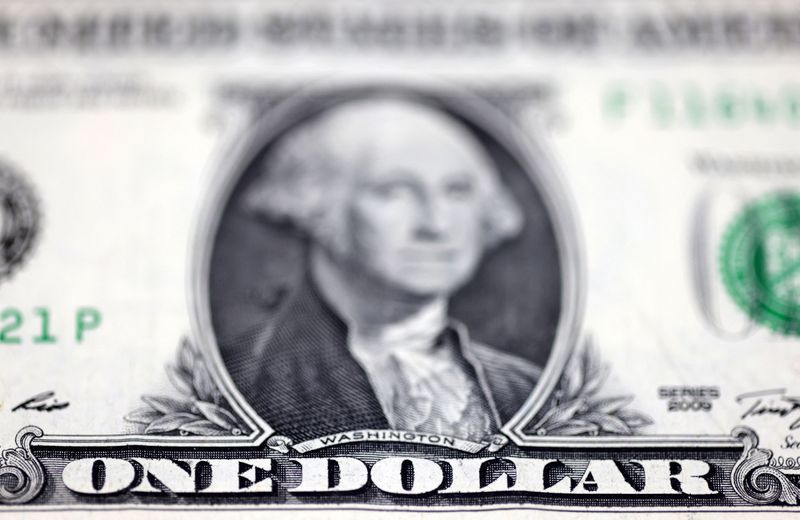By Rae Wee
SINGAPORE (Reuters) – The U.S. dollar (DX=F) found some footing on Monday but was still near a three-year low after a bruising week that shook investor faith in the world’s reserve currency as U.S. President Donald Trump’s tariff plans whipsawed global markets.
Investors braced for another volatile week as Trump’s imposition and abrupt postponement of tariffs on goods imported to the U.S. continued to sow confusion.
Currency markets held largely steady after the White House on Friday granted exclusion from steep tariffs for smartphones, computers and some other electronics imported largely from China, though Trump said over the weekend the move will be short-lived.
“At this point in time … it’s been handled haphazardly, heavy-handedly and with weight, and those measures have created a great deal of uncertainty,” said IG market analyst Tony Sycamore.
“Those storm clouds, they’re still circling, they haven’t gone anywhere.”
The dollar was last up 0.34% against the Swiss franc, having fallen to a decade-low on Friday and clocking its worst week against the Swissy in more than two years.
The euro fell 0.13% to $1.1344, after surging 3.6% last week and striking a three-year high on Friday as investors flocked to the common currency following a crisis of confidence in the dollar.
“I think we could see the euro trading at $1.20 by something like … end of July, early August,” said IG’s Sycamore.
Growing nervousness among investors in owning U.S. assets has caused some to dump those positions and move money into markets including Europe, with that flow boosting the euro.
Elsewhere, the yen fell 0.2% to 143.79 per dollar, while sterling slid 0.33% to $1.3084.
The Australian dollar was up 0.15% to $0.63035, extending its more than 4% gain from last week.
Against a basket of currencies, the U.S. dollar last stood at 99.73, not far from Friday’s three-year low.
“The market is re-assessing the structural attractiveness of the dollar as the world’s global reserve currency and is undergoing a process of rapid de-dollarisation,” George Saravelos, global head of FX research at Deutsche Bank, wrote in a client note.
“Nowhere is this more evident than the continued and combined collapse in the currency and U.S. bond market.”
A steep sell-off in the U.S. Treasury market last week, owing in part to a rapid unwinding of so-called basis trades by hedge funds, was a huge drag on the dollar.
Early on Monday, there was scant sign of any recovery in bonds with 10-year yields at 4.47% having seen the largest weekly rise in borrowing costs in decades. [US/]


